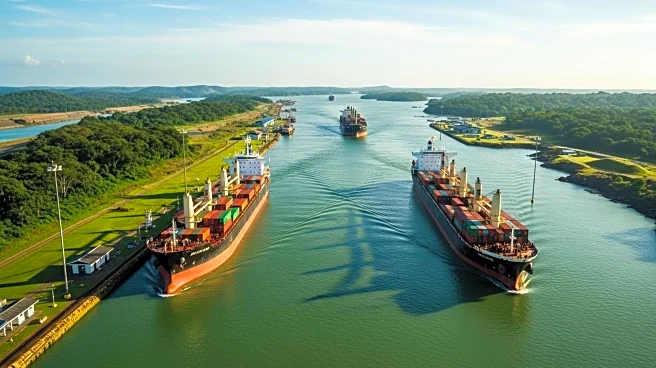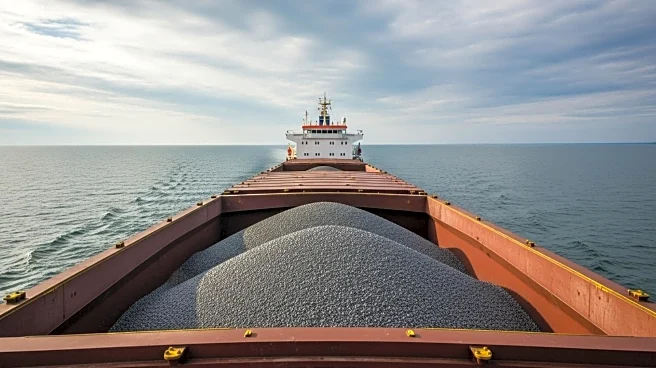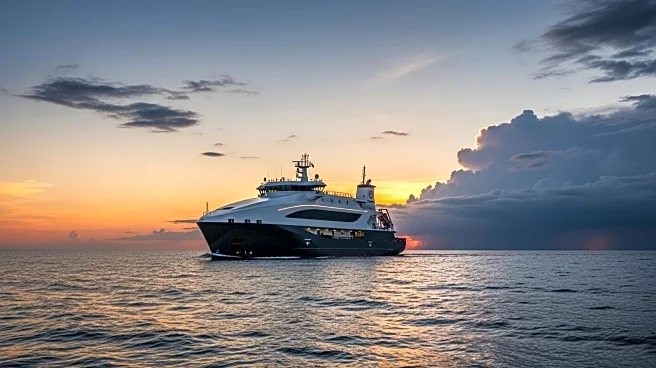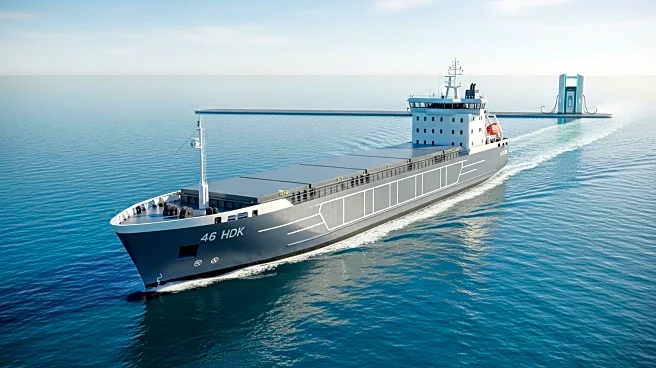What's Happening?
The Panama Canal Authority reported a slight decrease in vessel transits, averaging 32.5 ships per day in August compared to 32.6 in July. Despite increased traffic since lifting drought-related restrictions last year, the canal is not fully utilizing its 36 daily slots. The canal is projected to achieve gross income of approximately $5 billion for the fiscal year ending this month, meeting government expectations. The canal anticipates moving 500 million metric tons of cargo by the fiscal year's end, up from 423 million tons last year. U.S. tariffs have accelerated imports ahead of the Christmas season, contributing to improved performance. While ship traffic may decline in the coming months, larger vessels carrying more cargo are expected to offset the reduction in ship numbers.
Why It's Important?
The Panama Canal's performance is crucial for global trade, serving as a key transit route for goods between the Atlantic and Pacific Oceans. The slight decline in transits reflects broader economic trends, including the impact of U.S. tariffs on shipping patterns. The canal's ability to meet income targets despite challenges highlights its resilience and strategic importance. Larger vessels carrying more cargo could enhance efficiency and profitability, benefiting shipping companies and global supply chains. The canal's performance may influence shipping costs and trade dynamics, affecting industries reliant on international logistics.
What's Next?
As the fiscal year concludes, stakeholders will monitor the canal's ability to maintain income levels and cargo throughput. The anticipated reduction in ship traffic may prompt adjustments in operational strategies, focusing on maximizing cargo capacity per vessel. The canal's performance could influence future tariff policies and trade agreements, impacting global shipping routes. Continued investment in infrastructure and technology may be necessary to support larger vessels and optimize canal operations.











